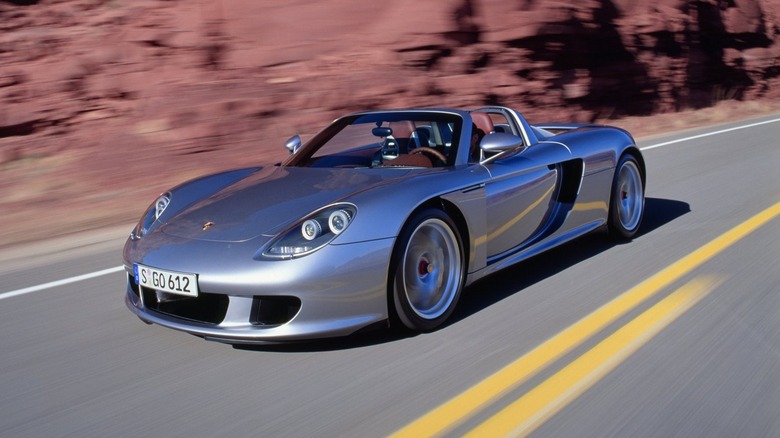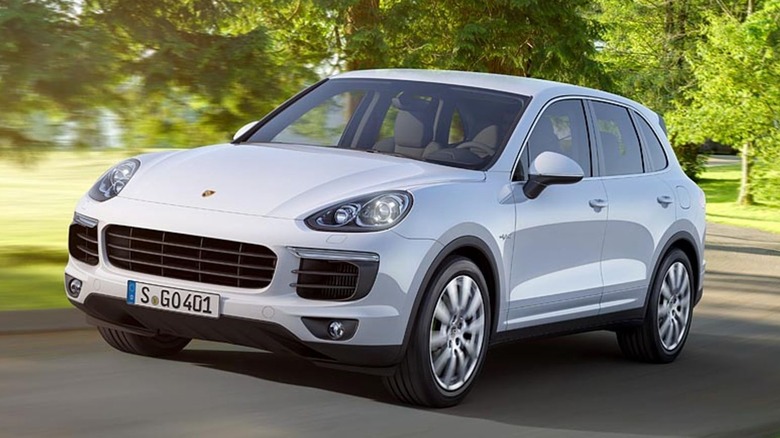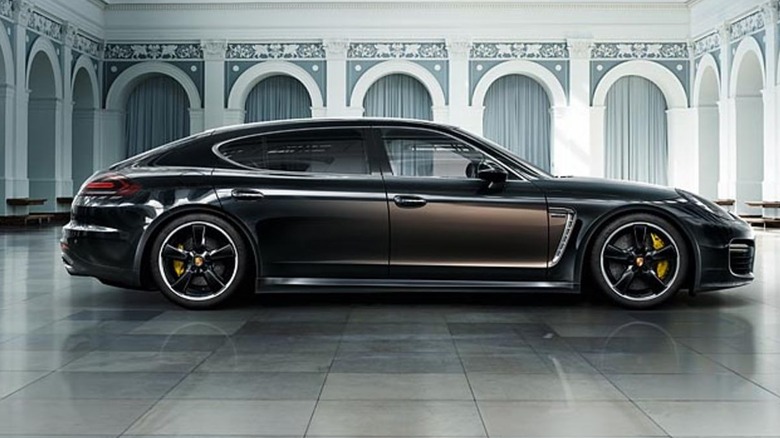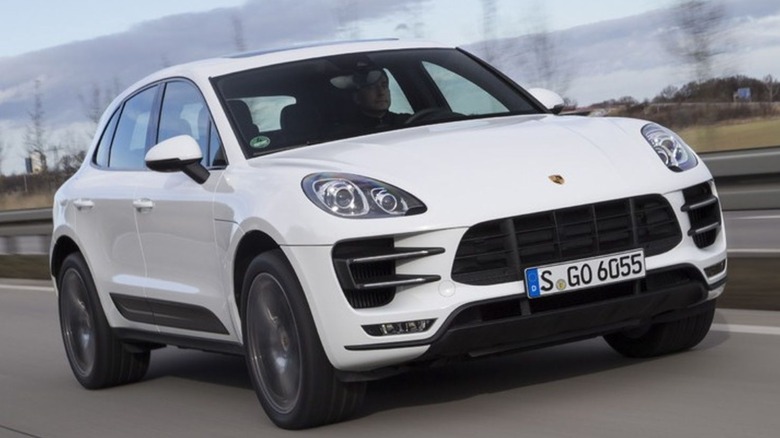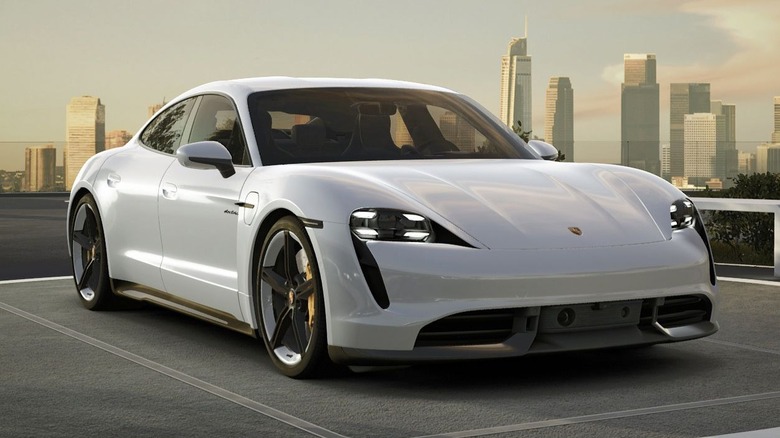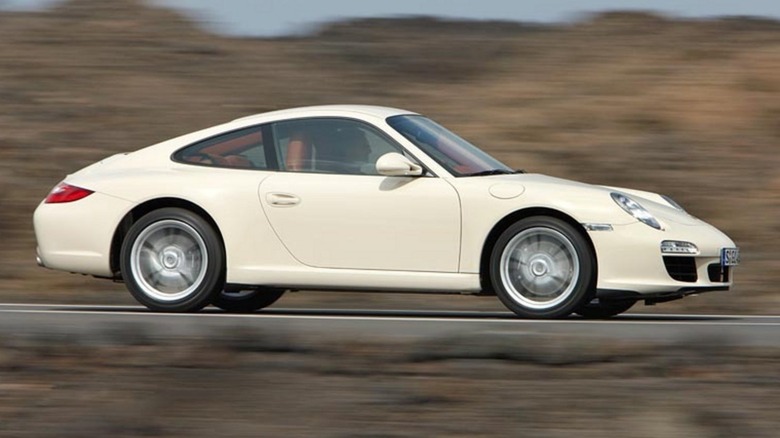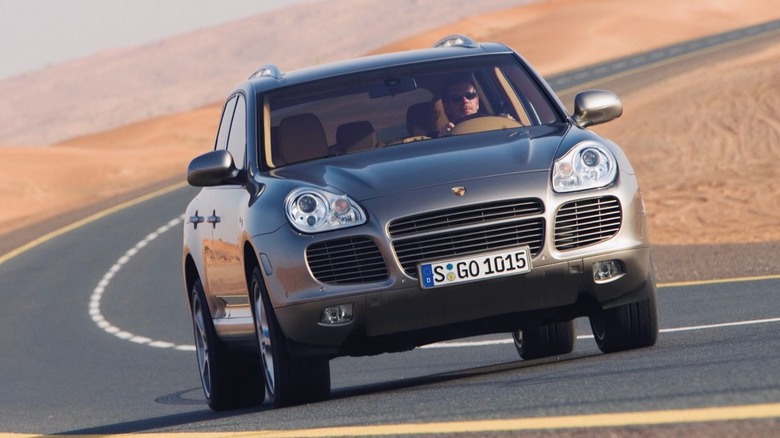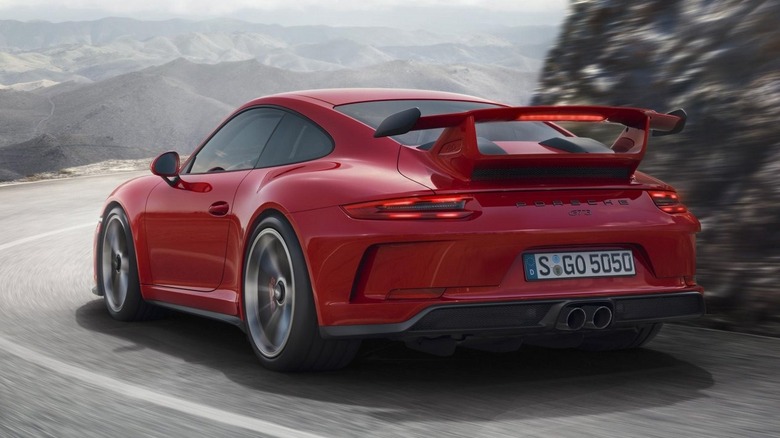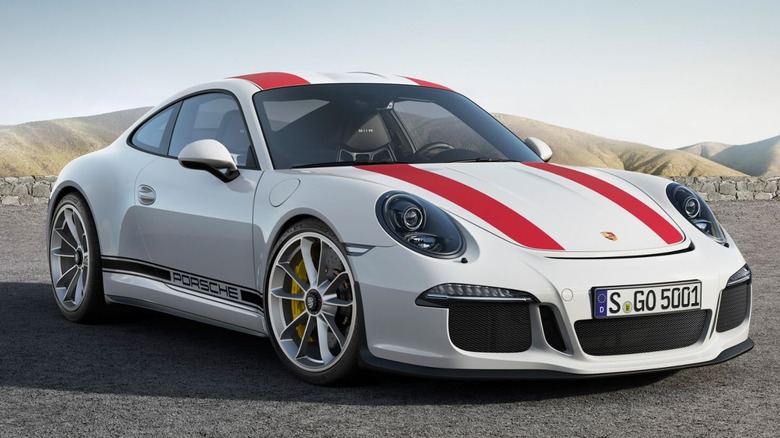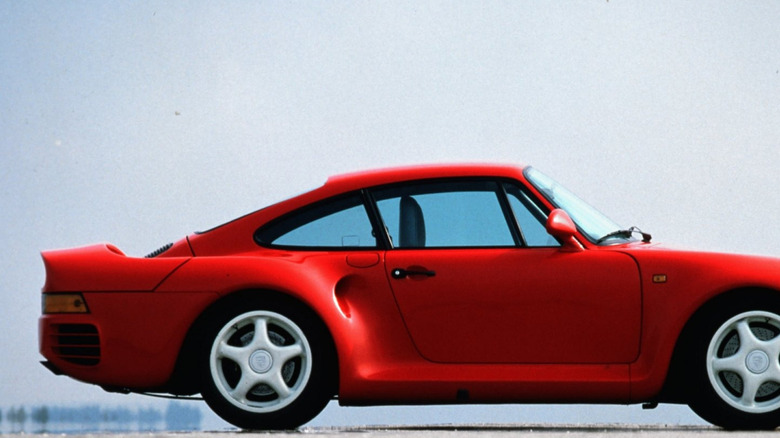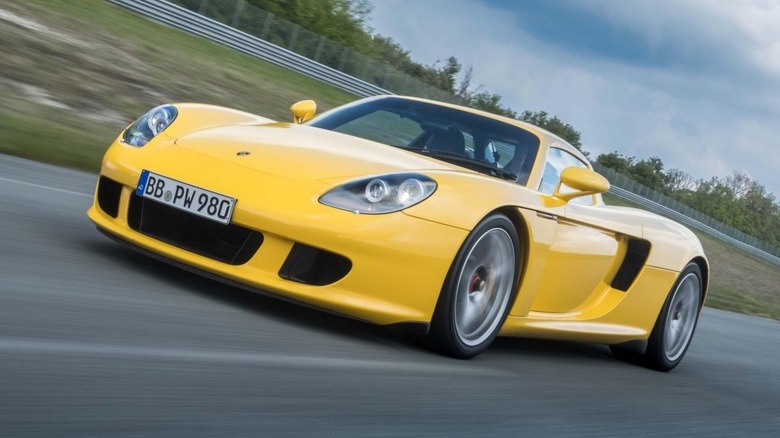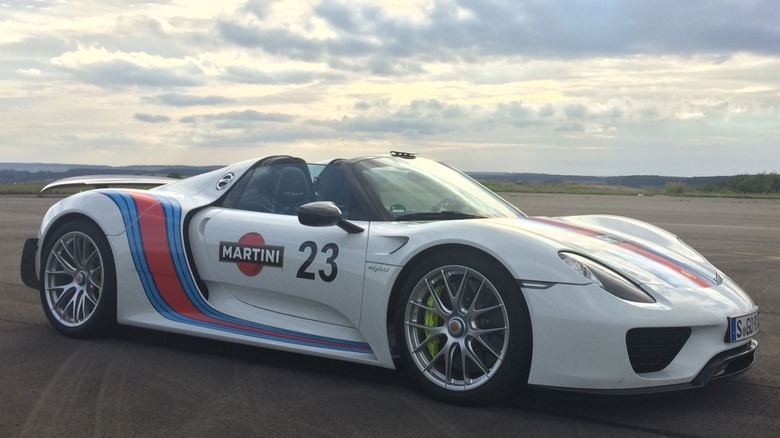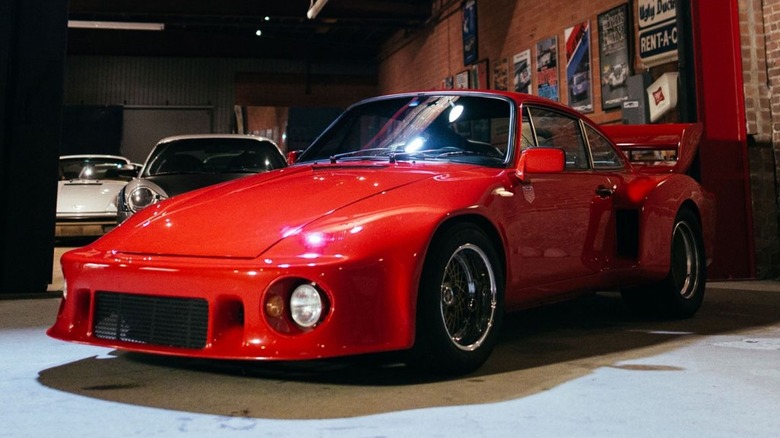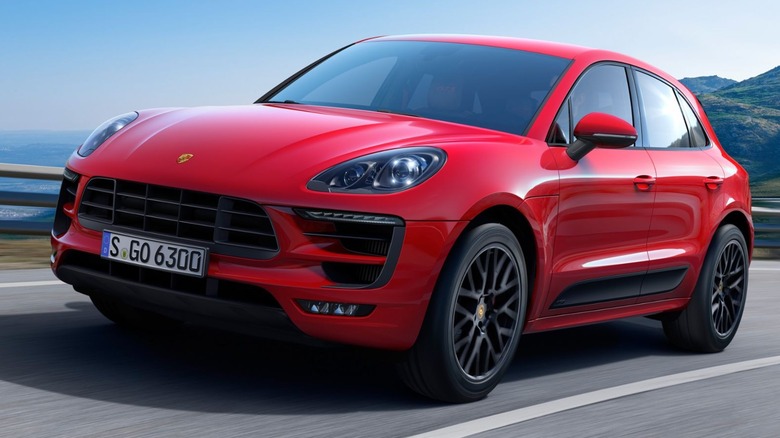6 Porsche Models With The Worst Depreciation Rates (And 6 That Hold Their Value)
Porsche is a brand associated with prestige, performance, and legendary sports cars like the 911. Big sticker prices are also part of buying a Porsche. Currently, the cheapest model, a base Macan crossover, starts around $65,000 plus a $2,350 destination fee, but you can spend a cool quarter-million dollars for a 911 GT3 RS, and that's before any options. However, even Porsche is not immune to the forces of depreciation.
There are used twin-turbo Porsches on the market today, making 500 horsepower and demanding less than $15,000. This somewhat outrageous model, which will be revealed below, is just one of the six Porsches to exhibit extreme rates of depreciation. Of course, the German automaker is no stranger to the other side of that coin. For well-heeled Porschephiles, there are cars out there that have appreciated from $225,000 originally to more than $2 million today.
In other words, Porsche is one of the few car manufacturers producing vehicles that manage to defy the laws of automotive depreciation. You might even call them investments. We'll cover those coveted cars as well in this rundown of Porsches with the most significant swings in value. To do so, we've collated data from reputable sources, including Classic.com, iSeeCars, and Kelley Blue Book (KBB), and arranged these Porsches from highest to lowest depreciation. All values are rounded to the nearest thousand.
2011 Cayenne
The Porsche Cayenne is credited with saving the automaker when it first arrived in the early 2000s and, much to the chagrin of traditionalists, has continued to excel across three generations. When the second-gen Cayenne arrived in 2011, it came standard with a 300-horsepower 3.6L V6 and all-wheel drive. You could even get these models with a six-speed manual, while the diesel-powered Cayenne was renowned for its reliability and deep torque reserves. At the time, in base spec, the 2011 Cayenne had a sticker price of $48,000.
Today, you can find used examples for as little as $9,000. Of the 12 that were for sale as of this writing, 11 came in under $24,000. According to KBB and J.D. Power, the average price you can expect to see for these 2011 Cayennes with a V6 is between $7,500 and $8,400. The point is, you could get into a kind of awesome used Porsche SUV, with available options like an off-road protection package and Burmester 16-speaker audio system, for a fraction of the original sticker price.
2010 Panamera Turbo
The 2024 Panamera Turbo S E-Hybrid comes with a $225,000+ price tag, 771 hp, and the ability to go from 0-60 mph in less than 3 seconds. That's impressive, but its predecessor, the 2010 Panamera Turbo, wasn't exactly a slouch. It boasted a 4.8L twin-turbo V8 cranking out 500 hp and 516 lb-ft of torque. Top speed measured 188 mph, and 60 mph came in 4 seconds flat. Adaptive suspension and staggered-width 19-inch rubber kept things planted, all from a station wagon capable of swallowing 44 cubic feet of cargo. Very impressive.
The 2010 Panamera Turbo came with a starting price of $135,000. If that was out of your price range, know that KBB puts the current Fair Purchase Price of a 2010 Panamera Turbo at just $15,000 today. Reviewing online listings reveals used examples in the $18,000 to $25,000 price range, which aligns with average values of $21,000 according to J.D. Power and $24,000 per iSeeCars. All-wheel drive came standard on these Panameras, but do a little research to find an example with Yachting Blue leather and real walnut trim for the full-bore luxury experience.
2015 Macan S
The 2015 model year marked the debut of Porsche's compact crossover, the Macan. With its Cayman-like driving dynamics and just-right amount of power, we said the Macan in S trim nailed the sports crossover sweet spot. A 340-horse naturally aspirated V6, double wishbone front suspension, and a big 19-inch tire footprint help on that front. As does a 5-second 0-60 mph run and the planted feel of standard AWD. When new, this Porsche started at $50,000, but the current used market shows examples of the Macan S for as little as $11,000 and as much as $29,000.
High-end optional equipment like 21-inch 911 Turbo Design wheels, carbon ceramic brakes, and 18-way adjustable seats would likely push those values higher. But both KBB and J.D. Power put the typical purchase price between $14,000 and $16,000, while iSeeCars says you can expect to pay closer to $20,000. In any case, it's the kind of big depreciation curve that represents an excellent entry into the world of Porsche for a reasonable outlay.
2020 Taycan 4S
The Porsche Taycan has earned a reputation as an EV that is fun to drive, and considering the 2025 GTS model offers 690 horsepower and 582 lb-ft of torque, it's easy to imagine why. It has also become a darling of depreciation since debuting in 2020. At the time, a Taycan 4S cost $109,000 to start. For early adopters, that translated to a battery-powered Porsche capable of a 3.4-second sprint to 60, pulling 1.03 g around the skidpad, and generating 562 hp. The 203-mile driving range is paltry in today's electric vehicle arena, but hey, how about that Porsche performance?
To experience it today, you can expect to pay about half as much as when the Taycan 4S was new, with average pricing running from $43,000 per KBB to $54,000 according to J.D. Power. That's similar to available listings of the 2020 Taycan 4S online that are as low as $48,000, though some examples are as high as $76,000. Keep in mind, in base spec, these Taycans came with a 71.0-kWh battery pack, while an optional 83.7-kWh setup could be had at higher levels. Be sure to look closely before making any final decisions.
2005 911 Carrera
Even the famed Porsche 911 sports car is not immune to the value-sucking ways of depreciation. Granted, you have to go back to 2005 to find a 911 that has shown significant declines in value. But those who do might find an affordable future Porsche classic in the 997-generation Carrera. These water-cooled 911s avoid the price premium of older air-cooled models and came standard with a naturally aspirated 3.6L flat-six behind the driver, as only the 911 does these days. Performance should remain thrilling thanks to rear-wheel drive, a standard manual transmission, and 325 hp on tap.
You could even consider these 911s fuel-efficient with 26 mpg highway ratings. As for price point, these 997 Carreras go for as little as $31,000 today, with the majority of available listings coming in under $49,000. J.D. Power says the average retail price for a 2005 911 Carrera is $32,000, with iSeeCars putting that figure higher at $41,000. Considering these 20-year-old base 911s originally stickered for $73,000, you can thank the forces of depreciation for making them relatively affordable today.
2008 Cayenne Turbo
The 2008 Porsche Cayenne Turbo may have some of the highest depreciation of any Porsche model, but that doesn't diminish its overall greatness. These range toppers came with a 500-hp twin-turbo V8, could tow 7,700 pounds, and boasted a maximum 11-inch ground clearance from the standard air suspension. Find a model with the Off-Road Technology package for a set of factory rock rails and comprehensive skid plate protection to go with the blistering speed. That would have cost you $94,000 in 2008.
But these first-generation Cayenne Turbos are now available for as little as $22,000 on the used market. KBB says you shouldn't pay much more than $8,700, but iSeeCars puts the average quite a bit higher at $15,000. As you might expect from a vehicle that can keep up with sports cars from a stoplight as well as with serious four-wheelers on the trail, a used Cayenne Turbo can be found in a wide variety of conditions. So tread carefully in this market, but find the right one and you could enjoy incredible Porsche performance at a fraction of the original pricing.
2014-2016 991.1 GT3
For those looking to buy a car that actually appreciates in value, we give you the Porsche 911 GT3. Specifically, the 991.1 generation that was produced between 2014 and 2016. Effectively a street-legal race car, these GT3s were the first production Porsches with active rear-wheel steering, had center-locking forged wheels, sported an enormous fixed rear wing, and could hit 196 mph at the top end. Targeted at owners who liked to race, with Porsche estimating some 80% doing so, the 2014 911 GT3 was an expensive toy at $131,000 when new.
Such is the price of a 3.8L engine with titanium connecting rods and forged pistons, a 9,000-rpm redline, and the ability to sling you from 0-60 in 3 seconds. Today, very low-mileage examples go for $171,000 with higher-mileage models fetching about $155,000. According to Classic.com, the 5-year trend on these GT3s puts pricing at $125,000, with the most recent sale completed for $135,000. Seems a small price to pay for a car with a naturally aspirated flat-six making 469 horsepower and what is surely a wickedly wonderful redline wail.
2016 991 911 R
Not that it likely needed the help, but when Porsche unleashed the 911 R in 2016, it leaned on classic supply and demand math to ensure depreciation was not an issue. By only producing 991 examples of this spiritual successor to the 1967 911 R, the German automaker guaranteed a frothing market. That and the fact that this purist-focused model featured such enthusiast catnip as the period GT3 RS engine with 500 hp, no automatic transmission option, a magnesium roof, 305 section-width rear rubber, a 200-mph top speed, and all the other goodies a top-tier Porsche sports car provides.
Though the 911 R was new less than 10 years ago and came with a price tag of $186,000, the market has since taken off. In 2023, one of these 911 Rs sold for $1.1 million, and the average price comes in at $460,000. The most affordable example that sold on the used market was $296,000, and most recently, a 911 R traded hands for $610,000. There's no denying that the special houndstooth upholstery, titanium exhaust system, and understated exterior of the 2016 Porsche 911 R are enticing, but only well-heeled customers will be able to enjoy one.
1987-1988 959
A car that needs no introduction, the Porsche 959 was fast when it debuted 38 years ago, and is still potent today, with a top speed of 199 mph and a 0-60 mph time of 3.6 seconds. It was also expensive at $225,000, but those who picked up one new and hung on to it until the present day would have been looking at up to an 878% increase in value. That's the math when you look at a recent 959 that sold for a heady $2.2 million. The 5-year trend in sale prices is $1.7 million, and the lowest recorded sale is $996,000.
Part of this incredible appreciation can be chalked up to only 337 units ever being made, but it also has to do with how ahead of its time the 959 was. Forward-looking features included automatic ride height and damping adjustments, a set of eight hydraulic dampers in place of anti-roll bars, magnesium wheels, run-flat tires, and the 156 hp per liter output of the 959's twin-turbo flat-six. A classic bedroom poster car among the teenage enthusiast set, the Porsche 959 remains a fantasy for most and an epic investment for a lucky few.
2003-2006 980 Carrera GT
The Porsche Carrera GT is renowned for its V10 engine, mainly because the naturally aspirated mid-mounted 5.7L mill was Le Mans-derived. But also because it delivered 605 hp at 8,000 rpm, 435 lb-ft of torque at 5,750 rpm, and came paired exclusively with a manual transmission. Weighing in at 3,140 pounds thanks to a carbon fiber chassis and blasting eardrums with a 93-decibel wail at full whack, the Carrera GT is considered one of the greatest analog supercars ever made.
That status came with a huge price tag of $390,000, to start, when new. Fast forward 20-plus years, and this Porsche averages $1.4 million on the open market and has seen examples sell for as much as $2.2 million. Arguably, the opportunity to pilot one of these legends to a 205 mph top speed while pulling up to 1.19 g in corners – with the roof off — is worth it, to the dedicated gearhead. But with only 1,270 ever built and the seven-figure purchase price, only a few of those gearheads are likely to have the chance.
2013-2015 918 Spyder
Following in the footsteps of the Carrera GT, the Porsche 918 Spyder became one of three production Porsche supercars to step outside the more traditional Porsche approach to high performance of upgrading the 911 sports car. Doing so yielded a naturally aspirated 4.6L V8 combined with a pair of battery-powered electric motors that produced a combined 887 hp and 944 lb-ft of torque. A seven-speed dual-clutch automatic sent power to all four wheels and, as you'd expect, the 918 Spyder was fast. A 2.2-second 0-60 mph time, 211 mph top speed, and a 6:57 Nürburgring lap time are just a few of this Porsche's performance credentials.
Naturally, a low-volume, ultra-high-performance car going up against the Ferrari LaFerrari and McLaren P1 was expensive, as in $845,000 when new. Since then, values have skyrocketed to an average of $1.9 million and a high of $3.9 million for a Weissach variant. The most cutting-edge car Porsche had ever made at the time, the 918 Spyder was the automaker's first hybrid supercar and one that could be driven for up to 16 miles on battery power alone. In a nod to the moniker, only 918 of these all-time Porsche supercars were produced, which is sure to keep values on the uptick in the foreseeable future.
1981-1989 930 911 Turbo Slantnose
A rare Porsche from the '80s, the 930-series 911 Flachbau, or "Slantnose" in English, is considered one of the most sought-after models in the automaker's long history. Some of that can be credited to its unusual looks, but the Slantnose also benefits from a murky history that leaves room for wild speculation. Estimates peg total production volume at 948, but that was across three generations. Arguably, the first series that ran from 1982 to 1983, was the most interesting as these models had headlights in the front bumper and a totally smooth, angled front clip.
The style was inspired by the period 935 race car and brought to fruition by Porsche's Sonderwunsch program and a wealthy client's request. Effectively a 935 racer for the street, these 911 Slantnoses had a typical new price of around $95,000 in 1981. Today, these cars average $204,000 on the collector market, but have sold for as much as $500,000. Certainly not as high as some of the multi-million dollar Porsches out there, but perhaps one of the most interesting models to appreciate considerably over the years.
Methodology
To evaluate Porsches with high depreciation, we collected data from Cars.com, KBB, J.D. Power, and iSeeCars. For the Porsches that have held their value, data was pulled from Classic.com and in all cases, original MSRPs were sourced either from the manufacturer or reputable sources like Car and Driver. All math was done based on market pricing at the time of publication.
